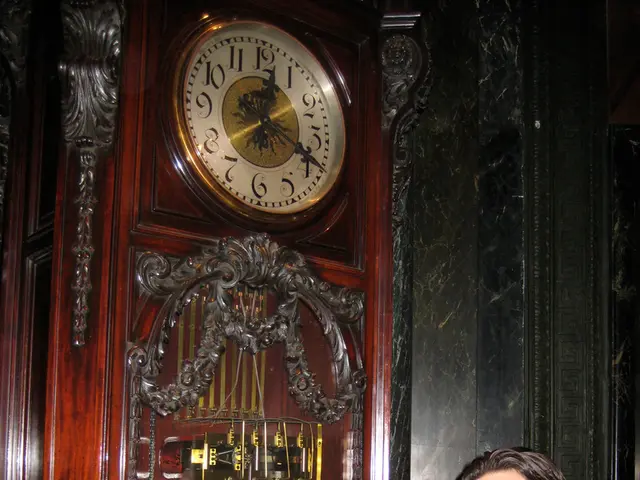Understanding the Term "Toxic" in Romantic Partnerships
Straight Up: What's the Damn Deal with Toxic Relationships?
Listen up, folks. Today, we're diving straight into the raw and gritty world of toxic relationships. No sugarcoating, no fluff - just the truth.
In this fast-paced, selfie-obsessed world, the term "toxic" seems to be tossed around like a frisbee at a picnic. But what the heck does it really mean in relationships? Let's break it down.
A toxic relationship is a game-changer, ruled by harmful, negative behaviors that leave individuals feeling drained, unhappy, and. well, screwed. It's crucial to understand the impact of toxicity because it can empower you to recognize when you're stuck in an unhealthy situation and take action to protect yourself.
So, let's strip the BS from 'toxic' and get down to the nitty-gritty. We'll unearth the warning signs, familiarize ourselves with toxic behaviors, and dissect the various types of toxic relationships that can wreak havoc on your life.
Signs You're Sitting in a Pile of Toxic Relationship Junk
- Criticism Central: Constantly feeling belittled by your partner because, let's face it, they're just plain mean. This erodes your self-esteem and confidence over time.
- Boundary Blur: A lack of respect for boundaries and personal space can be a red flag, as it disregards your autonomy and comfort.
- Manipulation 101: Partners may use guilt, gaslighting, or coercion to control your actions and decisions.
- Boxing Gloves at Breakfast: Escalating conflicts and unresolved issues create a constant state of tension and distress.
- Power Struggle: Unequal power dynamics lead to feelings of helplessness and dependency, deepening the toxicity of the relationship.
- Within the Bleeding Mind: The inability to communicate effectively leads to unresolved issues, creating a cycle of negativity and resentment.
- Love-Hate Relationship: Here's the deal, sometimes people with the same attachment style react to stress or conflict with toxic behaviors, such as an anxious attachment style leading to excessive clinginess or emotional volatility, or an avoidant attachment style shunning contact or being overly critical.
Toxic Relationships: The Types, Their Traits, and Their ImpactThere are different types of toxic relationships that can crop up, each presenting its unique challenges and dynamics. Today, let's dive deep into three of the most common ones:
- Emotionally Abusive Relationships: In these relationships, one partner uses manipulation, verbal abuse, and undermining self-worth to exert control.
Examples of crappy things an emotionally abusive partner might say include: "If you really loved me, you would do whatever I ask" and "You're so pathetic. No one else would ever want to be with someone like you."
- Codependent Relationships: These relationships are marked by unhealthy dependence on one another for validation and self-worth. One partner might cater to the other's needs at their own expense, while the other struggles to set boundaries and maintain independence.
Signs that you're in a codependent relationship: excessive caring-taking, lack of personal boundaries, fear of abandonment, people-pleasing tendencies, and difficulty communicating needs.
- Trauma Bond Relationships: Toxic relationships can also result from past traumas or conflicts, creating a cycle of pain and dysfunction. These bonds often manifest through intense highs and lows, periods of affection interspersed with episodes of abuse and manipulation.
Characteristics of a trauma bond relationship include: intense emotional rollercoasters, justifying or minimizing abuse, fear of being alone, compulsive need for validation, and intermittent reinforcement.
Until Next Time...Remember, when it comes to toxic relationships, awareness is power. Being aware of the signs, the dynamics, and the types can help you move towards healthier, more nourishing relationships.
If you find yourself stuck in a toxic relationship, know that healing is possible. Address your attachment wounds, prioritize self-care, set boundaries, and learn to love yourself again. And here's a little guidance for that journey: My online course, Healing Attachment Wounds, provides a holistic path to recovery and growth by combining somatic and spiritual healing techniques within a psycho-spiritual framework.
- In a toxic relationship, individuals often experience growth in their ability to identify and manage harmful behaviors, fostering resilience and self-awareness.
- Grief over a toxic relationship can result in deep emotional pain, but it can also lead to a powerful connection with one's own emotions and a renewed sense of intimacy in future relationships.
- Communication is key in preventing and escaping toxic relationships; learning to express needs, set boundaries, and establish trust can lead to healthier, more fulfilling relationships.
- Art, such as music, poetry, or painting, can serve as an outlet for processing the trauma of a toxic relationship and aid in the healing process.
- Relationships that lack trust, where one partner consistently breaks promises or lies, can lead to fear, insecurity, and a disruption of attachment.
- Play, or engaging in activities that bring joy and laughter, is essential in fostering a connection and building trust in a relationship.
- Lifestyle changes, such as prioritizing self-care, exercise, and mental-health practices, can optimize overall health and wellness and strengthen one's ability to navigate toxic relationships.
- Science plays a crucial role in understanding the dynamics and effects of toxic relationships, providing evidence-based strategies for healing and growth.
- Acknowledging and addressing past traumas, whether from a toxic relationship or other sources, can lead to greater emotional and mental health, fostering confidence and self-love.
- In moments of emotional vulnerability, such as during a healing process from a toxic relationship, establishing and maintaning healthy boundaries can help foster a sense of safety, empowerment, and stability.








